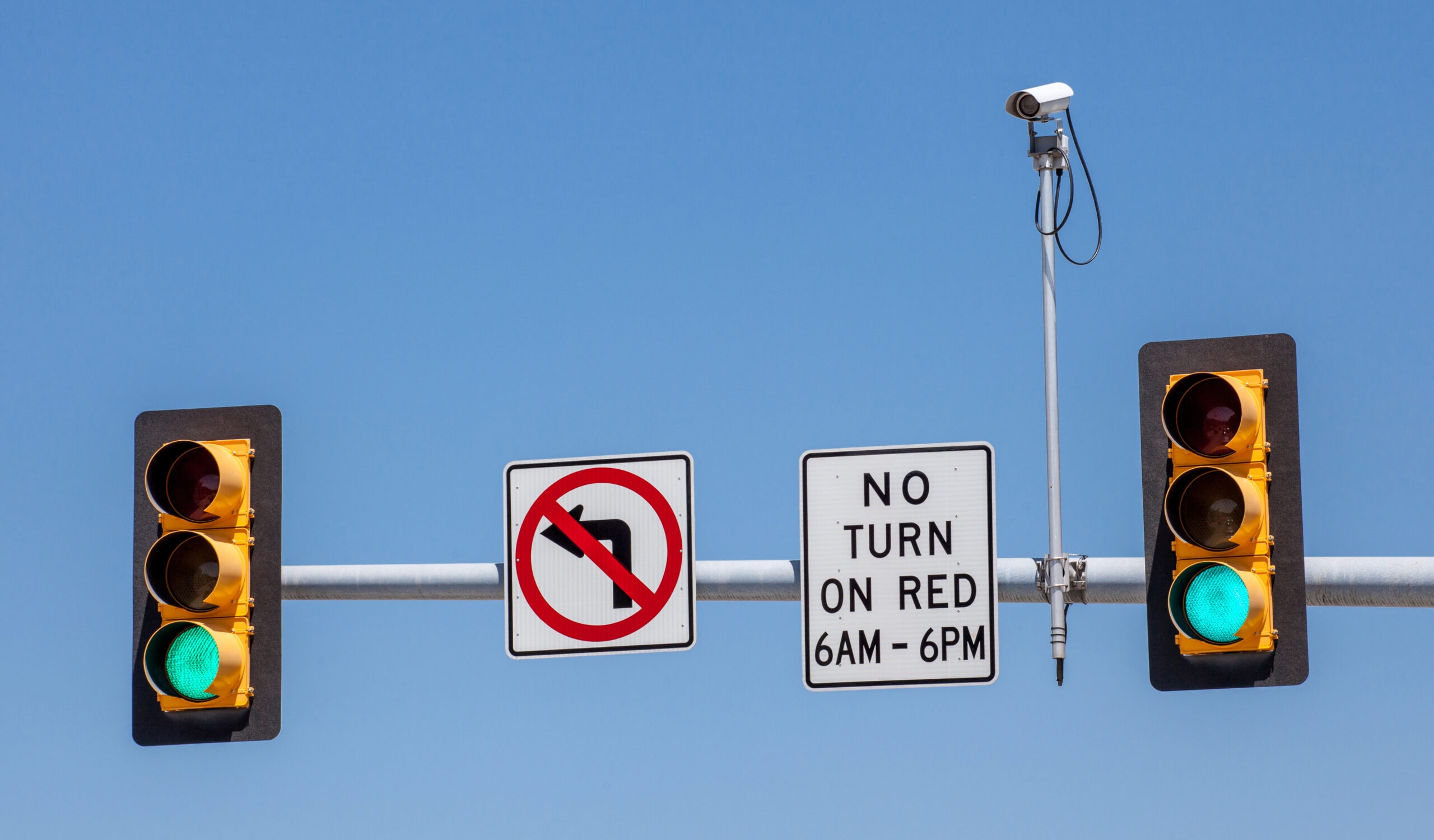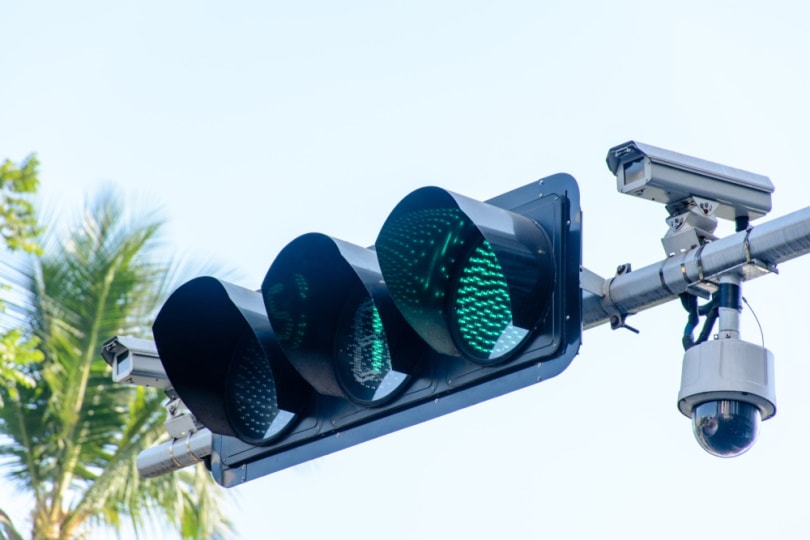What Do Red Light Cameras Look Like? What Should You Look Out For?
Last Updated on

Most everyone knows that you shouldn’t do it intentionally. Sometimes, it just happens if you’re driving in an unfamiliar area. You may assume it’s going to stay yellow. That is, of course, until it turns cherry red.
So, you’ve just run a red light. The chances are that, if you’re in a busy intersection, a camera caught you in the act. You may not have seen it, but a red light camera captured the evidence.
You may wonder what the device looks like and how to identify one. The one thing we can say for sure is that it looks like a surveillance camera that you may see in a store or business. It is usually next to the traffic light so that it can take precise snaps of traffic violators. The difference between a violation and a pass is sometimes only a matter of milliseconds.
What we can’t tell you with certainty is whether the piece of equipment you’re looking at is the real thing. Law enforcement is well aware of apps that drivers use to identify speed traps and other devices used to catch offenders. Some red light cameras you see aren’t real but are phony traps to keep motorists from learning the cops’ true locations. After all, it hardly helps their cause if everyone figures out the ruse.

How the Process Works
Rest assured that it isn’t a done deal if a camera snaps a pic of you blazing through the intersection. Someone must verify it in case of a device malfunction. Remember that the law states that all people are innocent until proven guilty. However, it doesn’t necessarily mean a ding on your driving record. Some states are content with discouraging lead-footed motorists. You may just get off with a fine.
Red light cameras aren’t allowed in every state. Some states, such as Maine, prohibit their use. Others, like Missouri, leave it up to the cities to make the call. You may only see them in specific circumstances, such as the devices set up in work zones in Pennsylvania.
Suffice to say that red light cameras serve a vital purpose in some areas. According to the Insurance Institute for Highway Safety (IIHS), running red lights caused 143,000 injuries and 846 deaths in 2019. The good news is that the implementation of these devices has worked and significantly lowered the sobering statistics dramatically.

Where You’ll Find Red Light Cameras
The IIHS has detailed guidelines about how to use red light cameras, presumably to fend off legal challenges. Law enforcement doesn’t install these devices just anywhere. The guidance encourages departments to start with the data to optimize their use and justify their expense. Therefore, you’re more likely to see a red light camera in busy cities than on rural roads.
Remember that law enforcement is always mixing it up, too. Just because you got busted with a pic at one intersection isn’t a guarantee it’ll be there tomorrow. The takeaway message is to drive smart and assume every red light is outfitted with a camera.
Red Light Cameras vs. Speed Detectors
Running red lights is the cause of many crashes. However, according to the Centers for Control and Prevention (CDC), excessive speed is also one of the most common causes of wrecks. Consequently, you may find detection devices for both red lights and speeding. Often, states will either have just red light cameras, both, or none. It’s not standard for any place to have speed detectors alone.
Unlike red light cameras, you may see speed detectors anywhere, including on rural roads. You may also find them in places away from traffic lights. Undoubtedly, you’re probably now wondering if these devices are legal.

The Legality of Red Light Cameras
Many people have questioned the legality of red light cameras and whether they are an invasion of privacy. According to the IIHS, their use is on solid legal grounds. Remember, you’re driving on public roads. Their use is under city, country, state, or federal jurisdiction. When you drive on them, you’re agreeing to abide by the rules of the road. While you may not like it, that’s the law.
Final Thoughts
Red light cameras serve a vital purpose, even if we don’t always agree with the outcome of them being used. They help to save lives by identifying violators and discouraging some repeat offenders. If they prevent even one injury or death, their implementation is justified. Sometimes, a reminder to follow the rules is necessary to keep all of us on our toes.
See also:
Featured Image Credit: trekandshoot, Shutterstock
About the Author Chris Dinesen Rogers
Chris has been writing since 2009 on a variety of topics. Her motto with all of her writing is “science-based writing nurtured by education and critical thinking.” Chris specializes in science topics and has a special love for health and environmental topics, and animals of all shapes and sizes.
Related Articles:
What Is the Best Binocular Magnification for Hunting? Optical Features Explained
Can You Use Binoculars to Look At Stars? How to Choose the Right Pair
How to Clean a Refractor Telescope: Step-by-Step Guide
How to Clean a Telescope Eyepiece: Step-by-Step Guide
How to Clean a Rifle Scope: 8 Expert Tips
Monocular vs Telescope: Differences Explained (With Pictures)
What Is a Monocular Used For? 8 Common Functions
How to Clean a Telescope Mirror: 8 Expert Tips
